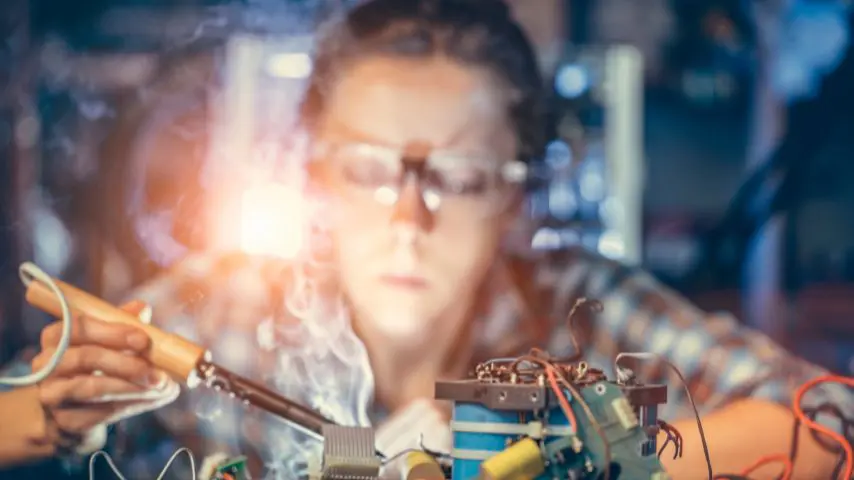Student Creativity and Ingenuity Shine at ASME IDSC and IAM3D Events
Student Creativity and Ingenuity Shine at ASME IDSC and IAM3D Events
Sept. 23, 2016

Designs, innovations and problem-solving — along with hard work and determination — were showcased last month by college students from around the world at ASME’s Innovative Design Simulation (IDSC) and Innovative Additive Manufacturing 3D Printing (IAM3D) Challenges on Aug. 21 and 22 in Charlotte, NC.
Held in conjunction with the 2016 ASME International Design and Engineering Technical Conferences & Computers and Information in Engineering Conference (IDETC/CIE) and the Additive Manufacturing 3D Printing Conference (AM3D), students from the United States, Canada, Egypt, Nepal, Taiwan, India, Korea and Lebanon shared their products and solutions at the IDSC and IAM3D Challenges. Both competitions shared a similar format, consisting of a 10-minute presentation by the students to a judging panel of academic, technical and entrepreneurial experts, followed by a five-minute question-and-answer period.
Although the format of the competitions – as well as the $2,000 top prize for the winners of each Challenge – were similar, the two programs have different objectives. While the ASME IDSC Challenge focuses on simulations and simulation frameworks and environments, the IAM3D Challenge showcases designs that employ additive manufacturing to address challenges impacting industry, manufacturing, and overall quality of life.
The IDSC Challenge is designed to give mechanical engineering and multi-disciplinary undergraduate students an opportunity to demonstrate their skills in developing and deploying simulations or simulation frameworks and environments. Optimally, these simulations would enable the prediction of models capturing systemic or service behavior for the needs of product or service design, maintenance, qualification or certification in all areas of engineering innovation.

Six student teams were named winners in the IDSC’s various categories. Chih-Yu Chen, Hung-Chen Yu and Chie-Yen Hsu of National Taiwan University were the winners of the Best Overall Simulation award in the commercial software category for their entry, “Soft Transformers: A Versatile Platform for Extreme Shape Transformation.” Keda Mehta, from B. H. Gardi College of Engineering & Technology in India, was named the Best Overall Impact/Utility winner in the mixed software category for the entry “Innovative Multiaxis Windmill.” Rohit Solanki, also from B. H. Gardi College of Engineering & Technology, was the winner of the Best Impact award in the commercial software category for the entry “Compact Cargo Lifter (C2L).” Three teams were named winners of the Best Utility award in the commercial software category: Madhavaram Sai Krishna and Kishore Mysore Nagaraja of PES University in India for “Optimization of Landing Gear for UAV Applications”; Himal Agrawal from the Indian Institute of Technology Kharagpur for “Thermo-mechanical Coupled Simulation of Friction Stir Welding with Experimental Validation”; and Madhumitha Ravichandran from SASTRA University in India for “Fluid Structure Interaction in Micromixers with Deformable Baffles.”
Whether re-engineering an existing product or creating a new design, ASME IAM3D showcases student creativity by demonstrating the value added through their innovative spirit, application of sound engineering design principles, and leveraging additive manufacturing technology to address a wide spectrum of challenges. In addition to focusing on problem-solving and building an overall case for need and value, students presented judges with a business case and actual prototype of their product.
From a prosthetic arm to a new take on wind instrument mouth pieces, the following five teams and their faculty advisors were honored for their creativity and ability to present a viable business model. Micah Hardyman and Jonathan Zigler of Tennessee Technical University were named winners of the IAM3D Best Innovation award for their entry, “Artifice.” Alex Buehler from the University of Wisconsin-Madison won the Best Overall Design award for “A New Approach to the Design and Manufacturing of Saxophone Mouthpieces.” Mrudang Mathur from Delhi Technical University won the award for Best Re-engineering/Multidisciplinary Collaboratively Designed Product for “Project Hridaya.” Two teams were selected as winners of the competition’s Best Presentation Award: Pascal Liddane and Gregory Tessier from Daniel Webster College for “Clactice: Modular Ice Climbing”; and Justin Clough, Mega Kroll and Arthur Siebel from the Milwaukee School of Engineering for “Additive Manufacturing for MicroTissue Development.”
Beginning next year, the IAM3D Challenge will take place at ASME’s forthcoming global Engineering Festivals (E-Fests). ASME E-Fests will be three-day, two-night regional events built around design, advanced manufacturing and robotics technologies that are intended to help engineering students expand their knowledge, test and showcase new skills, and inspire innovation. For more information on E-Fests, including ASME IAM3D competition details, visit www.asme.org/events/e-fests.




